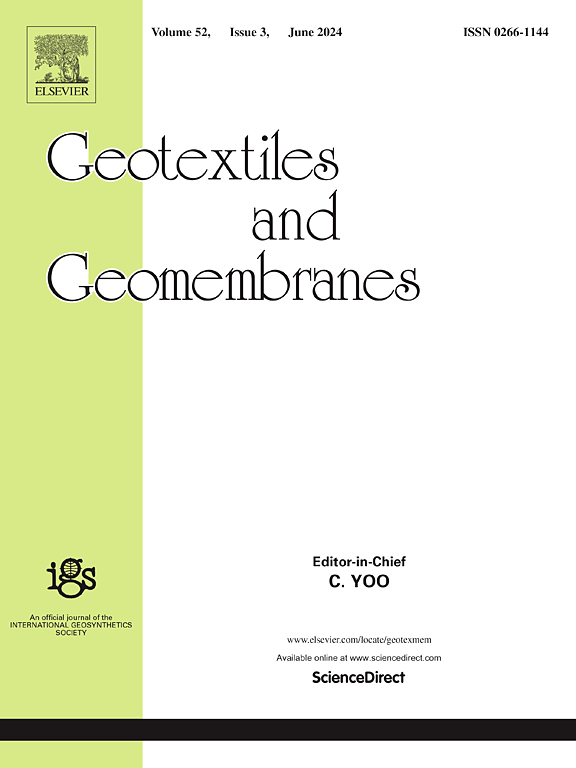Influence of wicking geotextile installation on moisture migration in silt under rainfall infiltration
IF 6.2
1区 工程技术
Q1 ENGINEERING, GEOLOGICAL
引用次数: 0
Abstract
Silt is widely used in subgrade construction in the middle and lower reaches of the Yellow River in China due to limited availability of high-quality fill. However, its high moisture sensitivity and low strength often lead to pumping, settlement, and deformation. This study investigates the hydraulic performance of a wicking geotextile in silt under simulated rainfall infiltration using one-dimensional soil column experiments. Three installation configurations were evaluated: (i) a control sample (CS) without geotextile, (ii) an embedded sample (ES) with the geotextile fully installed as a capillary barrier, and (iii) a surface-exposed sample (SES) with the geotextile extended to the atmosphere to improve drainage. Suction-volumetric moisture content relationships were monitored at multiple depths, and both water storage capacity and drainage mechanisms were assessed. Results indicate that ES and SES reached stabilization at similar suction thresholds, however, the SES more effectively delayed saturation and facilitated moisture migration by evaporation. Surface exposure induced a relative humidity gradient, generating suction and improving drainage, while a siphon effect redistributed water approximately 25 cm below and 15 cm above the geotextile. These findings confirm that the wicking geotextile can act as a capillary barrier and drainage medium, and provide guidance for silty subgrade design.
吸湿土工布对降雨入渗条件下淤泥中水分迁移的影响
淤泥在黄河中下游路基建设中被广泛应用,主要是由于高质量的填方有限。然而,其高湿敏性和低强度往往导致泵送,沉降和变形。采用一维土柱试验,研究了吸芯土工布在模拟降雨入渗条件下在淤泥中的水力性能。评估了三种安装配置:(i)没有土工布的对照样品(CS), (ii)完全安装土工布作为毛细管屏障的嵌入样品(ES),以及(iii)表面暴露样品(SES),土工布延伸到大气中以改善排水。在多个深度监测了吸力-体积含水率关系,并评估了储水能力和排水机制。结果表明,ES和SES在相似的吸力阈值下达到稳定,但SES更有效地延迟饱和并促进水分通过蒸发迁移。表面暴露引起相对湿度梯度,产生吸力并改善排水,而虹吸效应将水重新分配到土工布下方约25厘米和上方约15厘米处。这些研究结果证实了吸湿土工布可以作为毛细管屏障和排水介质,为粉质路基设计提供指导。
本文章由计算机程序翻译,如有差异,请以英文原文为准。
求助全文
约1分钟内获得全文
求助全文
来源期刊

Geotextiles and Geomembranes
地学-地球科学综合
CiteScore
9.50
自引率
21.20%
发文量
111
审稿时长
59 days
期刊介绍:
The range of products and their applications has expanded rapidly over the last decade with geotextiles and geomembranes being specified world wide. This rapid growth is paralleled by a virtual explosion of technology. Current reference books and even manufacturers' sponsored publications tend to date very quickly and the need for a vehicle to bring together and discuss the growing body of technology now available has become evident.
Geotextiles and Geomembranes fills this need and provides a forum for the dissemination of information amongst research workers, designers, users and manufacturers. By providing a growing fund of information the journal increases general awareness, prompts further research and assists in the establishment of international codes and regulations.
 求助内容:
求助内容: 应助结果提醒方式:
应助结果提醒方式:


